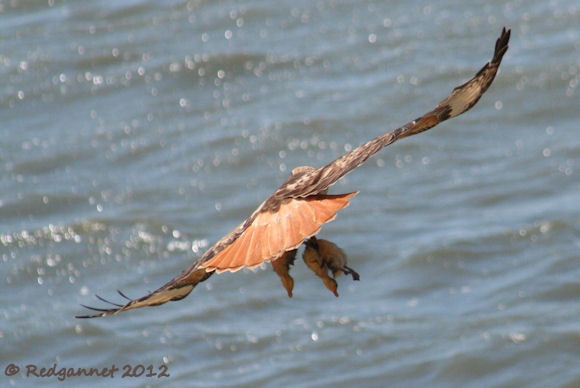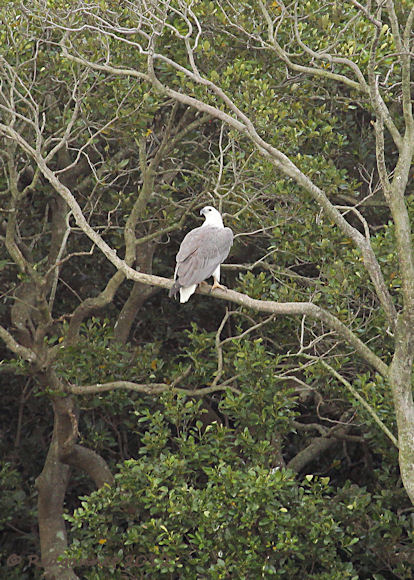Lincoln Park
is situated on San Francisco’s ocean-side at the far west end of Geary St. A
group of young men who had the shifty look of ne’er-do-wells the world over
were loitering in the car park, but I was travelling light today, carrying only
an old, cheap outfit while the good camera and lens are with the repairman.
This would have been the perfect day to get mugged, I was even on my reserve
set of binoculars. They could have had this old lot for the insurance.
Beyond the
rocks, Common Murres flew by, just above the water’s surface. The prevailing
direction was from right to left, giving the impression that their roosting
site is to the north of the Golden Gate Bridge with their feeding grounds to
the south.
Inland, a stand of pines refracted the early morning sun to beautiful effect. The areas close to the tops of the cliffs had been roped off to avoid erosion to the delicate plants on the slopes, but my potential insurance adjusters had stepped over them and were sniffing glue close to the edge.
Inland, a stand of pines refracted the early morning sun to beautiful effect. The areas close to the tops of the cliffs had been roped off to avoid erosion to the delicate plants on the slopes, but my potential insurance adjusters had stepped over them and were sniffing glue close to the edge.
A path leads
round the headland and a view back through the Golden Gate Bridge into the bay
with Angel Island just beyond the iconic structure, would surely be a very picturesque sight on a clear day.
A California Sealion had caught a huge fish and was thrashing around in the water trying to subdue it and break it into bite-size portions. This attracted the gulls who were hoping for a few scraps. There were porpoise close to the bay entrance too. They hardly break the surface, unlike their more exuberant dolphin cousins. They just appear to roll gently at the surface, thier tiny dorsal fin barely visible at distance.
White-crowned Sparrows
were very common along the path and a flock of Surf Scoters were seen close to
the mouth of the bay.
A California Sealion had caught a huge fish and was thrashing around in the water trying to subdue it and break it into bite-size portions. This attracted the gulls who were hoping for a few scraps. There were porpoise close to the bay entrance too. They hardly break the surface, unlike their more exuberant dolphin cousins. They just appear to roll gently at the surface, thier tiny dorsal fin barely visible at distance.
Birds seen;
25
Mallard 3,
Surf Scoter 80, Brandt’s Cormorant 300, Double-crested Cormorant 20, Brown
Pelican 80, Black Oystercatcher 2, Heerman’s Gull 4, Western Gull 60, Common
Murre 120, Pigeon Guillemot 20, Mourning Dove 4, Allen’s Hummingbird 1, Western
Scrub-jay 2, American Crow 6, Common Raven 4, Tree Swallow 6, Violet-green
Swallow 4, Barn Swallow 20, American Robin 12, Northern Mockingbird 2, European
Starling 15, California Towhee 4, White-crowned Sparrow 15, Brewer’s Blackbird
40, House Sparrow 6.
Take bus 38/38L heading west from anywhere along Geary St. $2.00 fare, approx 30 minute ride.
Visit the dedicated USA and Canada Page for more posts from San Francisco, including Palo Alto Baylands and Golden Gate Park.
Take bus 38/38L heading west from anywhere along Geary St. $2.00 fare, approx 30 minute ride.
Visit the dedicated USA and Canada Page for more posts from San Francisco, including Palo Alto Baylands and Golden Gate Park.























































